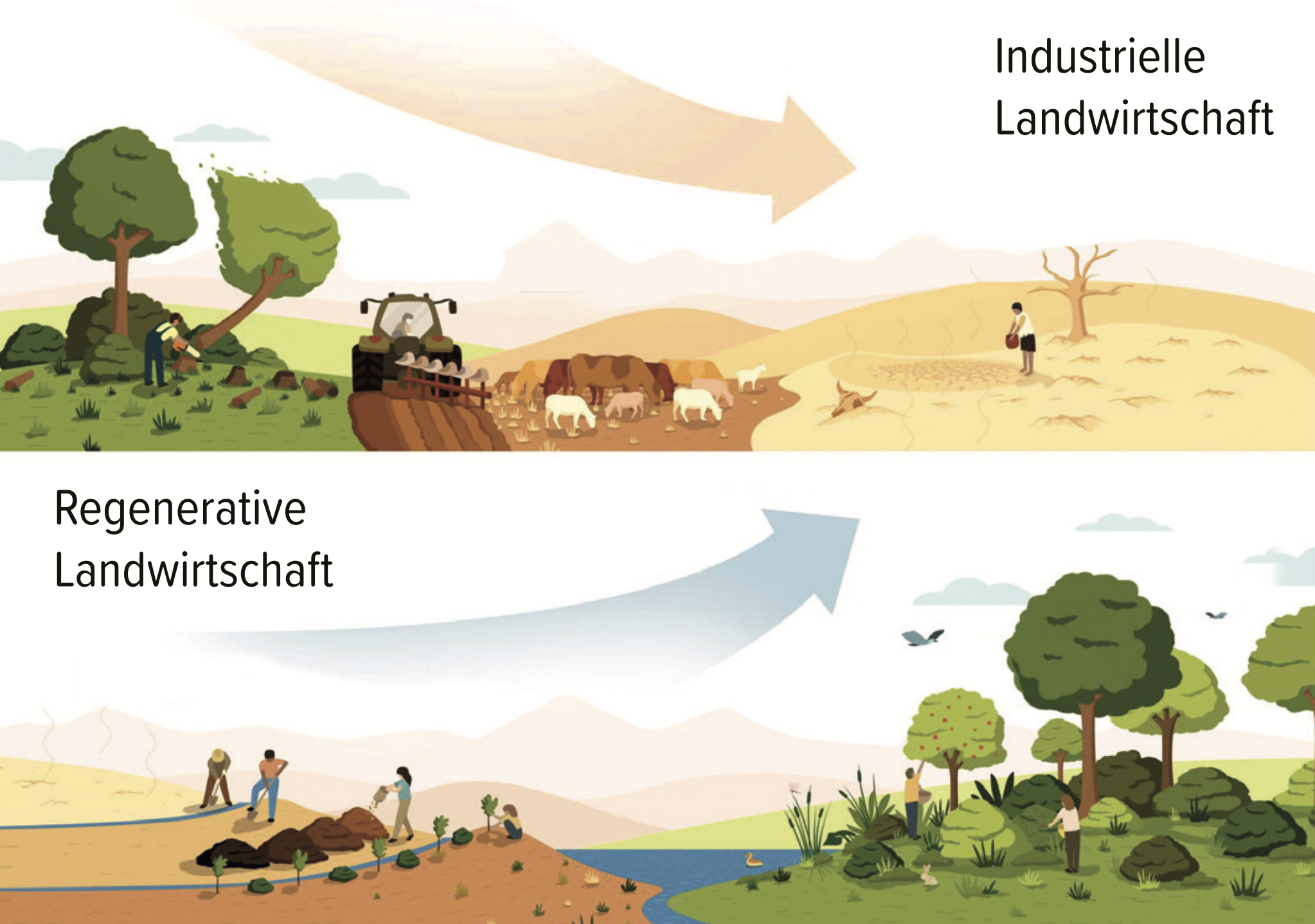What does regenerative agriculture mean?
Regenerative agriculture aims to regenerate agricultural land by making the soil more fertile, healthy and resilient. Unlike conventional agriculture, which degrades soil through monocultures, chemical fertilizers and pesticides, regenerative agriculture promotes natural regeneration and long-term ecosystem balance.
Key principles:
- Carbon sequestration
Carbon is the key to life and plays a central role in regenerative agriculture. By storing carbon in the soil, not only does soil structure improve, but it can also store more water, which in turn supports life on the land. This leads to an exponential increase in soil fertility and biodiversity. - Water and land management
Water is a crucial factor in regenerative agriculture. By understanding the topography and movement of water across the landscape, measures are taken to retain and use water optimally. This encourages the creation of "islands of life" where flora and fauna can thrive. One innovative method is "keyline design," which channels water from the valley to the middle of ridges to maximize water use. - Promote natural ecosystem processes
Instead of controlling nature, regenerative agriculture focuses on promoting natural processes. Animals play a central role by moving them across pastures in high densities, which stimulates plant growth and supports nutrient cycling. The interaction between plants and animals is used to increase soil fertility and create ecological niches. - Biomass recycling
By returning biomass such as compost, tree cuttings and animal excrement to the soil, the nutrient cycle is maintained. This helps to ensure that the soil becomes more fertile year after year and that the cultivated areas can be used in the long term. - Avoidance of synthetic interventions
Regenerative agriculture consistently avoids unnatural fertilizers, pesticides and the excessive use of machinery. This not only protects the soil from further degradation, but also promotes biodiversity.
Scientific foundations and education:
Mathematics plays an unexpectedly important role in regenerative agriculture, whether in planning water systems or understanding growth patterns in nature. A deeper understanding of the mathematical relationships helps to better understand and promote natural processes.
Challenges and future:
Studies by the FAO* have shown that the world's arable land will only produce an average of 60 harvests. Then the soil will be so depleted that no crops will be able to grow on it! Regenerative agriculture requires a rethink, away from the idea of static conservation and towards a dynamic understanding of growth and change. In this context, sustainability does not mean stagnation, but continuous development and adaptation. Through the conscious use of technology, such as drones for mapping landscapes, and the application of traditional wisdom, resilient, fertile and sustainable agricultural systems can be created.
*FAO = “Food and Agriculture Organization of the United Nations”

